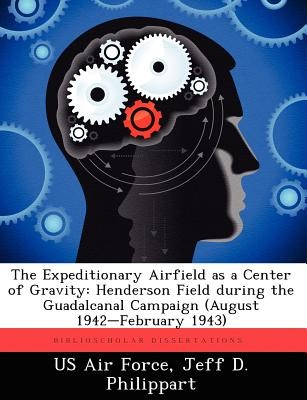
- We will send in 10–14 business days.
- Author: Jeff D Philippart
- Publisher: BiblioScholar
- ISBN-10: 1249326419
- ISBN-13: 9781249326410
- Format: 18.9 x 24.6 x 0.3 cm, softcover
- Language: English
- SAVE -10% with code: EXTRA
The Expeditionary Airfield as a Center of Gravity (e-book) (used book) | bookbook.eu
Reviews
Description
This study explores the contemporary relevance of the Guadalcanal campaign to current military operations. Specifically, it uses expeditionary joint air operations flown from Henderson Field during the period August 1942 to February 1943 as a case study for the employment of airpower from an austere airfield. Henderson Field provides a historical example of the expeditionary airfield as a center of gravity for joint military operations, and it demonstrates that key force enablers provide critical capabilities for the use of airpower from austere airfields. The joint air forces at Henderson Field, collectively known as the Cactus Air Force, flew defensive counterair and interdiction missions against the Japanese. The Cactus Air Force also provided close air support for US Marines fighting against the Japanese army on Guadalcanal. Air operations from this austere airfield would not have been possible without several key force enablers. Maintenance, logistics, and runway construction and repair were vital to sustaining the outnumbered Cactus Air Force. US Marine and Army ground troops-who fought multiple battles to protect Henderson Field-provided airfield security. In the dramatic course of this seesaw campaign, the tactical capabilities of the Cactus Air Force were key to the eventual victory by the Americans.
EXTRA 10 % discount with code: EXTRA
The promotion ends in 18d.04:23:51
The discount code is valid when purchasing from 10 €. Discounts do not stack.
- Author: Jeff D Philippart
- Publisher: BiblioScholar
- ISBN-10: 1249326419
- ISBN-13: 9781249326410
- Format: 18.9 x 24.6 x 0.3 cm, softcover
- Language: English English
This study explores the contemporary relevance of the Guadalcanal campaign to current military operations. Specifically, it uses expeditionary joint air operations flown from Henderson Field during the period August 1942 to February 1943 as a case study for the employment of airpower from an austere airfield. Henderson Field provides a historical example of the expeditionary airfield as a center of gravity for joint military operations, and it demonstrates that key force enablers provide critical capabilities for the use of airpower from austere airfields. The joint air forces at Henderson Field, collectively known as the Cactus Air Force, flew defensive counterair and interdiction missions against the Japanese. The Cactus Air Force also provided close air support for US Marines fighting against the Japanese army on Guadalcanal. Air operations from this austere airfield would not have been possible without several key force enablers. Maintenance, logistics, and runway construction and repair were vital to sustaining the outnumbered Cactus Air Force. US Marine and Army ground troops-who fought multiple battles to protect Henderson Field-provided airfield security. In the dramatic course of this seesaw campaign, the tactical capabilities of the Cactus Air Force were key to the eventual victory by the Americans.


Reviews